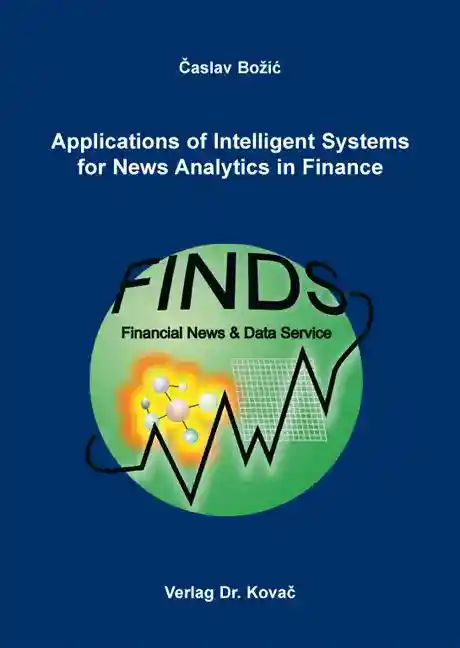Časlav BožićApplications of Intelligent Systems for News Analytics in Finance
Studien zur Wirtschaftsinformatik, Band 71
Hamburg 2013, 178 Seiten
ISBN 978-3-8300-6853-2 (Print)
ISBN 978-3-339-06853-8 (eBook)
Zum Inhalt
News articles make a very important information source for traders beacuse news stories reach a huge number of people, and they can initiate massive market movements, like panic selling, or massive buying, but they can also lead to more subtle market movements. With the rise of algorithmic trading volume in recent years, the need for quantifying qualitative information in textual news and incorporating that additional information into new trading algorithms emerged.
The first publication to apply methods of empirical finance for the exploration of media sentiment content was authored by Tetlock in 2007. He was able to provide evidence that sentiment measure defined as a count of words belonging to certain categories of Harvard IV-4 psychological dictionary has a relation to future equity prices. This evaluation approach is extended to include a general notion of sentiment score, allowing more complex methods of text mining to be evaluated. As a result, the methodology for creating benchmark datasets from historical data is proposed, and one particular realization provided. This realization of benchmark uses historical data provided by Thomson Reuters Tick History database, and makes the first available benchmark for financial text mining with over 570,000 historical data points aligned with more than 100,000 news articles.
By means of the provided benchmark the performance of three most important text classification approaches is compared: Bayesian classifier, support vector machines, and artificial neural networks. The performance of support vector machines measured by the proposed benchmark outperformed both other methods, including the multilayer feedforward neural network with two hidden layers.
The data produced by sentiment analysis can be used in number of ways - e.g. support professionals in making financial decisions by presenting them the results of sentiment analysis in a comprehensible form, mostly using visualization techniques; or feed the data into trading algorithm to be used as an additional parameter. Since a sentiment visualization that considers specificities of a financial setting was not found in the corpus of sentiment visualization literature, the visualization component in the context of Financial News and Data Services (FINDS) project has been designed. It is specifically tailored to ensure a visibility in the great amount of data flowing from stock markets and online news outlets.
